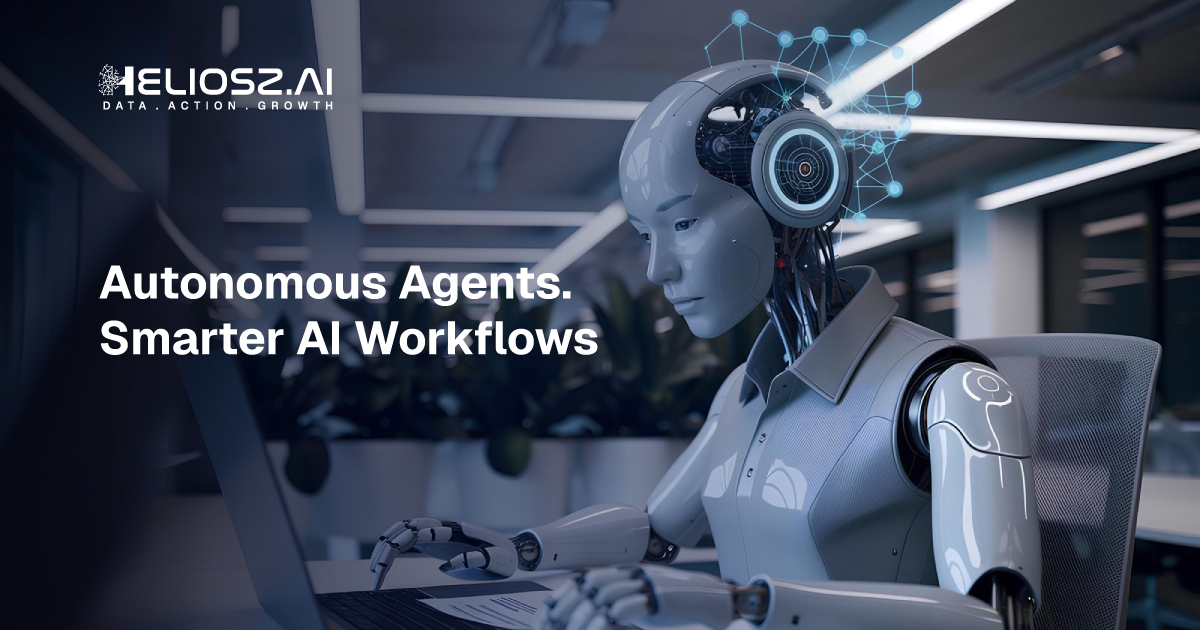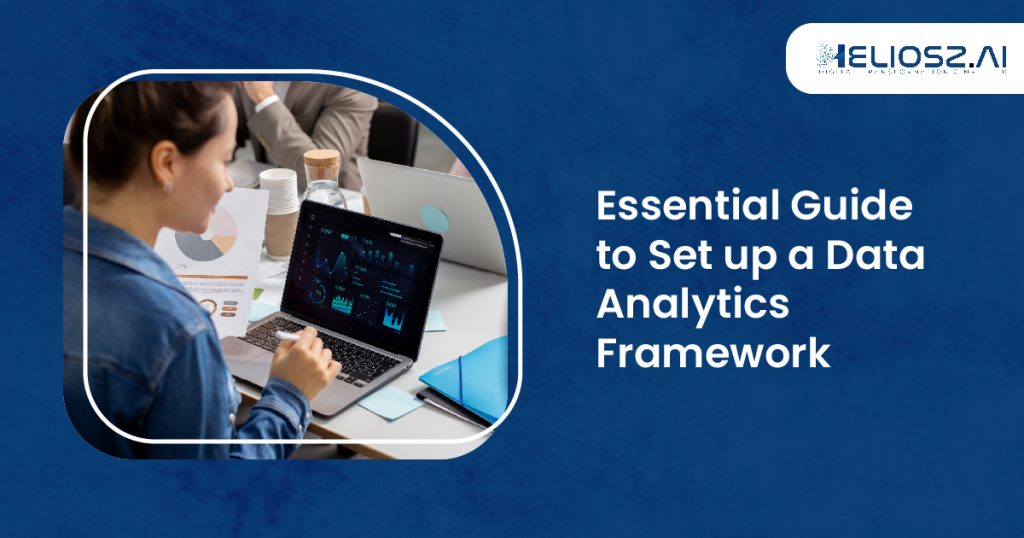Companies of all sizes and industry verticals are now more and more dependent on the analytics insights delivered by data to make decisions, streamline operations, and have a competitive market share. The full potential of data will be utilized only through the establishment of a reliable data analytics framework. It is the basis of the whole process of data being collected, processed, analyzed, and transformed into actionable intelligence. In this article, let’s explain the basic procedures and practical guidance for configuring an efficient data analytics framework.
What is a Data Analytics Framework?
A data analytics framework is a structured system that includes the processes, tools, and technologies needed to collect, store, process, analyze, and visualize data, allowing companies to draw their conclusions and make decisions based on data. It serves as a model for proper control of the life of data and the main focus is the accuracy, accessibility, and fidelity to the objectives of the company.
Key Components of a Data Analytics Framework
Data Sources and Data Collection
Rather than taking many complex steps in data analysis, it is easy to find and then acquire the exact data, setting the course for the whole project. The data can be obtained from different locations, such as the company’s internal databases or CRM systems.
It could also come from transactional logs and external sources, like social media, third-party APIs, and public datasets. In the case of data that consists of many varieties and amounts, you will be forced to adopt mainly a good strategy that will make the data timely, appropriate, and good.
Also, when dealing with large volumes of data it is highly recommended to implement strategies, like data normalization, deduplication, and validation to ensure data quality and relevance.
Data Storage Solutions
The things with data are not very complex, they just need to be stored properly to be handled efficiently and in time for the processing. The usual relational databases, data warehouses, and modern data lakes cover their purposes in the fields each one has its characteristics.
Besides, all the advantages of each pro and the situation with the data are carefully studied. Customizability, reduplication, and availability are the crucial factors for the best store method.
For instance, AWS, Google Cloud, or Azure, are some cloud-based storage solutions that are highly scalable, flexible, and cost-effective thus they can be used to build modern data analytic infrastructures.
Data Processing and Transformation
Hardly ever do we get data that is ready for analysis without any preprocessing. Therefore, it is necessary to clean, normalize, and do other data preprocessing as a part of the process to make the data usable.
Data processing engines like Apache Hadoop and Apache Spark are usually used to manage data processing in large quantities, in order to transform data for further analysis, thus guaranteeing that the data is valid, consistent, and well-formatted for analysis.
Apart from Hadoop and Spark, tools like Apache NiFi and Apache Airflow can be very useful in orchestrating complex data workflows, thereby ensuring efficient and scalable data processing.
It is important to incorporate data lineage as well as auditing mechanisms into the data processing approach to maintain transparency and traceability in the entire life cycle of data.
Data Analysis and Modeling
Analyzing and modeling is one of the core stages of a data analytics framework, where the data is broken down to learn the patterns, correlations, and trends.
Statistics, presented in the form of machine learning algorithms, and predictive models are used to derive ideas that can be employed in business strategies. The choice of analytical approaches relies on the precise objectives of the study and the character of the data that is being analyzed.
Data Visualization and Reporting
Synchronizing the generated findings with the data analysis to workers is a must. Number board tools such as Tableau, Power BI, and D3.js can transform complex data into intuitive charts, graphs, and dashboards.
These visualizations can thereby help the executives to pick out the findings rapidly and turn them into good decisions that are reliant on information. The protocols for reporting should be in place so that the distribution of the insights is done regularly and correctly.
Step-by-Step Guide to Establishing a Data Analytics Framework
Step 1: Identifying Business Objectives and KPIs
The quest begins with a crystal-clear understanding of the business objectives. What problems do you want to address? What are the chances of the projects you want to do being realized?
Setting the Key Performance Indicators (KPIs) that are linked to these objectives is an important task because they will act like the north star of your data analytics journey.
Step 2: Selecting the Appropriate Data Sources
Once you have the objectives at hand, the next step is to notice the logs that provide the necessary information. If both the retention and sourcing of internal and external information get to be involved with the information the businesses require, then it is crucial to get the data sources from the right locations. You need to make sure that, first, the sources you select are trustable and, secondly, the information can be accurately and specifically trusted to your KPIs.
Step 3: Designing Data Architecture
The architecture of data covers designing a path through which data can flow within the organization, from data collection to data analysis.
This involves recording the definition of data storage solutions used, the definition of data integration processes utilized, and the definition of the entire data pipeline.
A successful library ensures that data is not only more manageable but also more secure and able to be accessed from a variety of different points.
Step 4: Implementing Data Collection Mechanisms
One of the major areas that need immediate attention and to start working on is the data collection mechanism. The Extract, Transform, Load (ETL) processes, APIs, and data ingestion tools are some of the data collection mechanisms that need to be developed to gather information from various sources.
Most of the mechanisms have to be automated to the greatest extent to attain the maximum consistency and minimize the chances of errors.
Step 5: Data Cleaning and Preprocessing
So that the cleaner the set of data is, the better, data cleansing should be conducted which essentially means the removal of inaccuracies, duplicates, and irrelevant information.
Preprocessing can include such operations as normalizing the data formats, imputing the missing values, and transforming the data to a suitable format for the analysis process. This is a major step to be taken if the data is of good quality and your analytical results are reliable.
Step 6: Choosing Analytical Tools and Techniques
Among the many good ones, the right decision to go with for selecting the right analytical tools and techniques is critical. The course of data analysis is whether statistical analysis, machine learning, or advanced analytics.
The kits need to fit the goals you have for your analysis and the level of complication that your data shows. For instance, you may apply tools similar to Python, R, and the specialized software which presents a vast array of analytical capabilities to solve your problems.
Step 7: Building Data Models
Data modeling involves creating mathematical representations of the data to predict outcomes or describe relationships between variables.
The most common examples of this are regression, classification, and clustering models. These kinds of models are tested, validated, and refined on some critical applications to check for their credibility and reliability.
Step 8: Creating Visualization Dashboards
Visualization dashboards provide a dynamic and interactive way to present data insights. These data dashboards need to be sensitive to the audience’s needs, enabling the immediate understanding of the information and the action needed.
The software, which includes Tableau and Power BI, permits features that are adaptable to creating stunning visual stories.
Step 9: Establishing Reporting Protocols
Regular reporting is essential to keep stakeholders informed of ongoing trends and insights. The establishment of the reporting protocols on frequency, target audience, and content will make sure that the business analytics process keeps up with the objectives of the company.
Best Practices for a Robust Data Analytics Framework
Ensuring Data Quality and Integrity
The effectiveness of your data analytics tools is primarily based on the quality of your data. Establishing strict policies and procedures on data governance, like regular audits and validation checks, will help in ensuring the integrity of your data. This refers then to the evidence of rightful data possession and responsibility within the organization.
Scalability and Flexibility Considerations
Not only will your organization, knowledge have been brought in to join your data farm but also there will be a necessity to invest in the best technologies and systems. The scalable data analytics environment is made to support the number of videotapes and complexity without the loss of operating speed.
Adaptability is very important. Thus, the possibility of the environment of new data sources, analysis methods, and business requirements should be given relevance.
Integration with Existing Systems
The modern data analytics of the enterprise must be used in concert with the IT infrastructure and business systems of the company. This means that the universal connection with ERP systems, CRM software, and other business software should be ensured.
Stable and long-range system performance will be achieved through systems of data storage and processing that are compatible with and support each other.
Security and Compliance Measures
Due to increasing cases of data breaches and privacy scares it is extremely important to ensure the security of data analytics is a must in the present context.
This involves the use of strong encryption, access control, and observance of the monitoring systems against the leakage of the content of the user’s personal information. Conformance to data privacy provisions like GDPR and CCPA which have been made the law is another prerequisite for keeping away trouble from the side of the regulator.
Common Challenges in Setting Up a Data Analytics Framework
Data Silos and Integration Difficulties
Data silos, one of the situations where data is isolated within different departments or systems, are a challenge. Data silos’ resolution includes the bringing together of the data from scattered sources and the construction of a single data ecosystem, all of which call for massive expenditure of human resources.
Virtualization of data encompasses a broad range in overcoming data silos. With this method, you can access and merge information from various places without having to remove physical data making the process of integration much easier.
Balancing Performance with Costs
However, if you have access to the latest and most advanced technologies, it is important to be practical and to consider the costs. Ultra-high-speed data visualization can be a costly tool for the company.
Investments in big data and machine learning have the potential to raise revenues of the companies up to 10 % by utilizing the large amount of data they generate.
Addressing the Skills Gap
A great data analytics system is crucial. Assuring that the company leaders have a sound and deep understanding of the complex process of analytics is very important.
As regards the second point, the shortage of skills is the most crucial part of discussion in the modern era of AI and data science. Training and development or hiring skilled professionals are the ways to solve this problem.
Managing Stakeholder Expectations
When an organization implements a data analytics framework, it is normally accompanied by the highest anticipation from the stakeholders. It is advisable to manage the expectations of the different people by telling them clearly the abilities and the fund limitations of the model.
Besides, it is necessary to cope with the situation by taking into account the realistic schedules, the obstacles that may arise, and the potential of the projects.
Heliosz for Building Intelligent Data Analytics Frameworks
Work smart with Heliosz.AI to enhance your data analytics ability and convert your data to a strategic asset. Our collection of sophisticated data analytics technologies and resolution of intricate issues makes it possible for organizations to form intelligent data analytics frameworks that are manageable, and efficient data analytics frameworks.
When you partner with us, you will have a foot forward in all new technology and ideas that will discover data-derived decisions and enable a company to grow in other directions. Heliosz.AI to pilot you through the data world and be able to reach unmatched success by working with smart, data-driven strategies.
Don’t hesitate to get in touch with us and we will show how it is done with the development of an intelligent data analytics framework.
Final Thoughts
Setting up a data analytics framework is a complex but rewarding endeavor. By following the steps outlined in this guide and adhering to best practices, organizations can unlock the full potential of their data, driving informed decision-making and strategic growth.
Data is an evolving tool of businesses, and it is only natural that the framework should evolve with it, ensuring it remains resilient, scalable, and aligned with future trends.
Building a stable data analytics framework is never a one-time task, but it can be a core part of your organization’s success if done with a clear plan, execution, and the best data solution partner like Heliosz.AI.






























